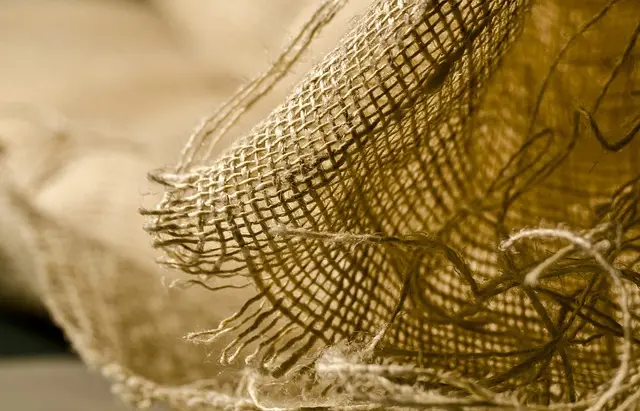Muscle soreness, known as Delayed Onset Muscle Soreness (DOMS), is a common response to intense physical exertion or unaccustomed activities. It typically occurs 24 to 72 hours post-exercise due to microtrauma to muscle fibers and can be managed with a combination of rest, hydration, nutrition, and potentially natural remedies from the kratom family, which contain alkaloids like mitragynine and 7-hydroxymitragynine. These compounds are believed to interact with opioid receptors in the brain for analgesic benefits. While kratom can be a viable alternative to traditional pain medication, it should be used cautiously under professional healthcare supervision as part of an integrated recovery plan. It's important to differentiate between DOMS and injury-related pain, ensuring appropriate measures are taken to avoid exacerbating any potential injuries. A balanced approach that includes a mix of active recovery, stretching, and professional guidance is key to effectively managing muscle soreness and maintaining an active and healthy lifestyle. Always consult with healthcare professionals before incorporating kratom into your recovery regimen, considering its complex effects and individual variability in response.
Exploring the realm of fitness and recovery, this article delves into the creation of personalized workout regimens tailored for those experiencing muscle soreness. Understanding the nuances of muscle soreness, from its scientific origins to distinguishing between delayed onset muscle soreness (DOMS) and injury-related pain, sets the foundation for a comprehensive approach to muscle fatigue management. As we navigate through the intricacies of exercise intensity and frequency, we also explore the kratom family’s impact on muscle recovery and pain management. The active compounds within this plant group offer potential relief from soreness, prompting a discussion on their role and safe use in a balanced fitness routine. Subsequently, we provide guidance on designing a workout plan that not only complements kratom’s benefits but also emphasizes the importance of active recovery, stretching, and a holistic approach to training. Nutrition, hydration, and responsible integration of kratom into your fitness journey are key components for optimizing muscle health and alleviating soreness. Join us as we offer insights into monitoring progress and fine-tuning your workout plan for a safe and effective muscle soreness relief experience.
- Understanding Muscle Soreness and Its Causes
- – The Science Behind Post-Workout Muscle Soreness
- – Identifying the Types of Muscle Soreness: DOMS vs. Injury Pain
Understanding Muscle Soreness and Its Causes

Muscle soreness, often characterized by discomfort or pain in the muscle tissue, can arise from a variety of activities, including intense exercise, unaccustomed movements, or even prolonged periods of inactivity. This phenomenon, commonly known as delayed onset muscle soreness (DOMS), typically occurs 24 to 72 hours post-exercise and is associated with microtrauma to the muscle fibers. Understanding the underlying mechanisms of muscle soreness is crucial for effective management and continued engagement in physical activities. The kratom family, comprising mitragynine speciosa and other related species, has garnered attention for its potential analgesic properties, which may offer relief from muscle soreness. Research suggests that compounds found within the kratom family could interact with opioid receptors in the brain, providing pain relief effects. These findings are particularly relevant for individuals experiencing muscle soreness as a result of strenuous workouts or sports-related injuries, where traditional pain medication may be less effective or come with unwanted side effects. Integrating natural remedies like those from the kratom family into a comprehensive recovery strategy can be beneficial, provided they are used responsibly and under the guidance of a healthcare professional. It’s important to note that while the kratom family may offer relief, addressing muscle soreness also involves proper rest, hydration, nutrition, and gradual reintroduction to the activity that caused the soreness to ensure a balanced approach to well-being and recovery.
– The Science Behind Post-Workout Muscle Soreness

Muscle soreness post-workout is a common experience among individuals engaging in physical activity, particularly when introducing new exercises or increasing intensity. This phenomenon, known as delayed onset muscle soreness (DOMS), occurs due to microtrauma and inflammation within the muscle fibers that have been stressed during exercise. The science behind this mechanism involves the disruption of muscle fibers during intense or unaccustomed activity, which triggers a cascade of biological events, including an influx of calcium into the muscle cells and the activation of various enzymes responsible for repair and adaptation.
The kratom family, originating from Southeast Asia, has been traditionally used for its pain-relieving and medicinal properties. Specific alkaloids within this family, such as mitragynine and 7-hydroxymitragynine, are believed to interact with opioid receptors in the brain, offering analgesic effects that can help alleviate muscle soreness. Research suggests that these compounds may modulate pain perception, reducing the discomfort associated with muscle recovery. However, it is crucial to approach any supplementation with caution, as the effects of kratom and its derivatives can be complex and vary between individuals. Proper dosage, understanding the legal status in your area, and consulting with a healthcare professional are essential considerations when considering kratom for post-workout muscle soreness relief.
– Identifying the Types of Muscle Soreness: DOMS vs. Injury Pain

When engaging in a new workout regimen or intensifying an existing one, muscle soreness is often inevitable, particularly in the form of DOMS—Delayed Onset Muscle Soreness. This type of muscle tenderness typically occurs within 24 to 72 hours post-exercise and is a natural response to physical stress on the muscles. It’s characterized by aches and pains without any visible signs of damage or inflammation. In contrast, pain resulting from an injury is sharper, more localized, and often accompanied by other symptoms like swelling, discoloration, or a clear point of tenderness. Understanding this distinction is crucial for tailoring workout plans to alleviate soreness without exacerbating an underlying injury. For instance, the kratom family, particularly mitragynine-specific kratom strains, has been explored for its potential role in managing pain associated with muscle soreness, though it’s important to consult with healthcare professionals before incorporating such substances into a wellness routine. A customized workout plan to relieve DOMS might include active recovery exercises that maintain blood flow and promote healing without overtaxing the affected muscles, while also integrating stretching and foam rolling to enhance flexibility and reduce stiffness. Conversely, if injury pain is present, rest and protection of the injured area are paramount, with physical therapy exercises carefully selected to support recovery without re-injury.
In conclusion, muscle soreness is a common experience for individuals engaging in physical activity, with Delayed Onset Muscle Soreness (DOMS) and injury pain distinctly different yet equally impactful on one’s recovery and fitness journey. Understanding the science behind post-workout muscle soreness is crucial for tailoring effective workout plans that mitigate discomfort. Among the various strategies, the kratom family has garnered attention for its potential role in alleviating pain and inflammation, though it should be approached with caution and under professional guidance due to its potent effects. Customizing one’s exercise routine to include movements that target less sore muscle groups can provide relief while still allowing for progression. By combining such targeted workouts with proper rest, hydration, and nutrition, individuals can effectively manage muscle soreness and continue their fitness endeavors without undue interruption.






